The Viking Age, spanning from 800 to 1200 AD, witnessed a remarkable chapter in human history marked by the adventurous spirit of Scandinavians. These seafaring warriors, known as Vikings, embarked on journeys that took them far and wide, raiding coastal areas, trading, and establishing settlements across Europe and beyond. Among the tangible remnants of their legacy, Viking swords stand out as iconic symbols of their martial prowess and distinctive craftsmanship.

The Discovery:
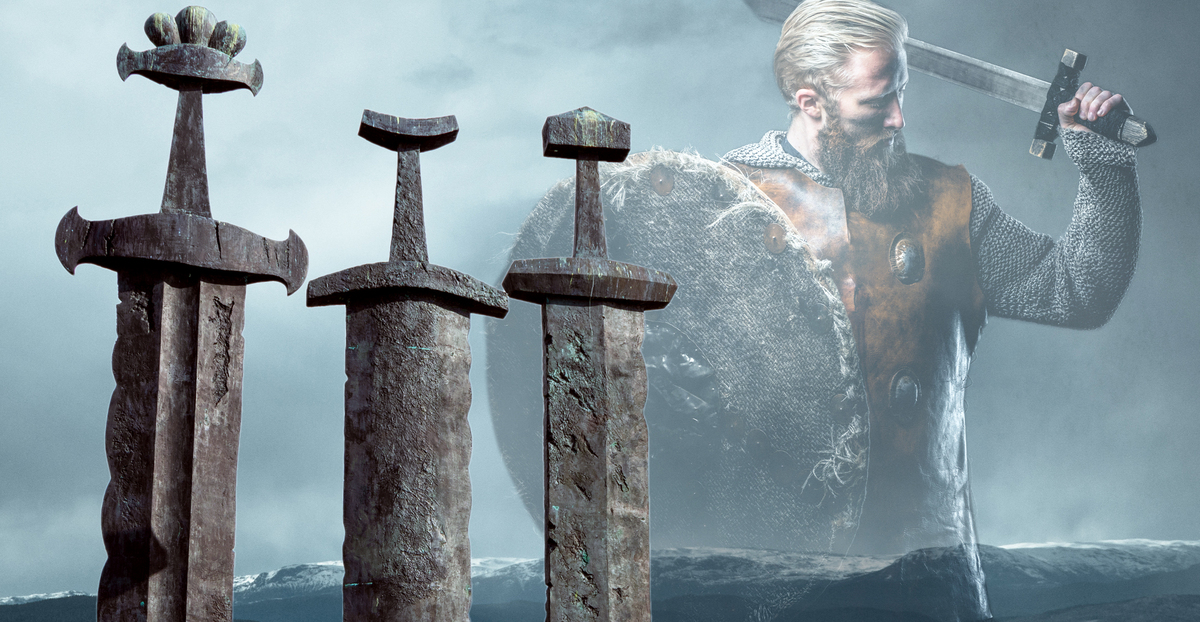
In a recent archaeological revelation, two sets of Viking sword fragments were uncovered in Estonia, shedding light on a fascinating aspect of Viking burial practices and weaponry. Mauri Kiudsoo, an archaeologist and keeper of the archaeological collection at Tallinn University, played a pivotal role in unraveling the mysteries surrounding these ancient artifacts.
Dating back to the middle of the 10th century, the swords were found in close proximity, approximately 80 meters apart. Kiudsoo suggests that these swords were likely used as cenotaphs – grave markers honoring individuals buried elsewhere, such as fallen warriors on battlefields or those who met their demise during trade missions or diplomatic endeavors.
The Broken Swords:
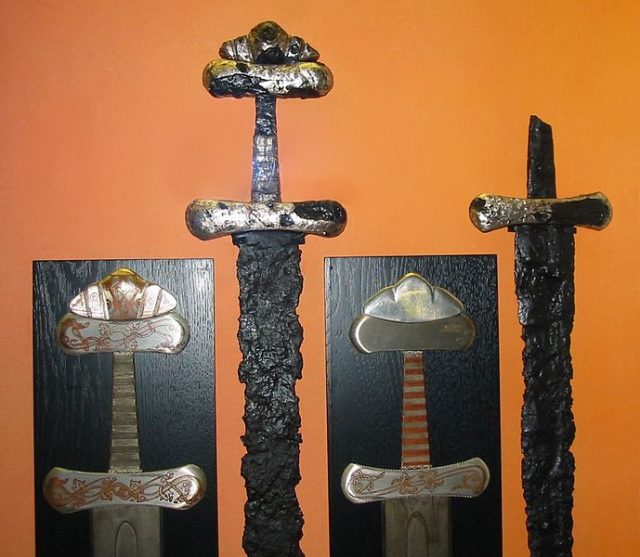
Two sword hilts on exhibit in Hedeby Museum. The sword on the left is from a Viking Age burial at Busdorf, Schleswig-Flensburg; Petersen type S, with silver and copper inlay work. Photo by viciarg ᚨ CC by 2.5
One intriguing feature of the discovered swords is that they were in pieces. According to Kiudsoo, this was a common practice during the Viking era, where broken or unusable weapons were interred with the deceased. Despite their fragmented state, historians could discern the type of weapons they were by examining the distinctive H-shaped grips. These grips provided valuable insights, confirming that the swords belonged to the prevalent double-edged H-shaped variety commonly used during the Viking Age.
Historical Context:
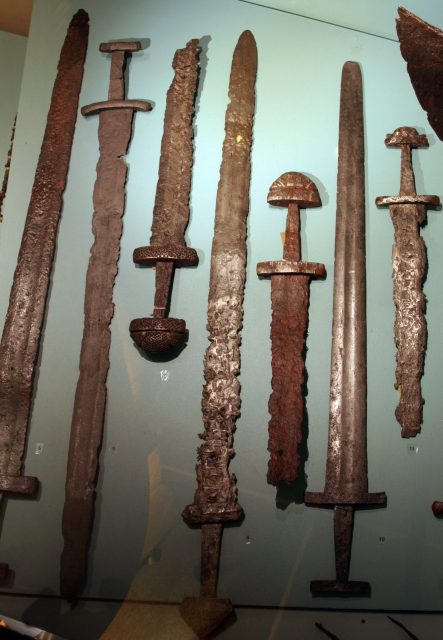
Swords from the Viking age, found in Sæbø, Hoprekstad, Vik i Sogn, Sogn og Fjordane county, Norway. Exhibited at Bergen Museum. Photo by Arild Finne Nybø CC by 2.0
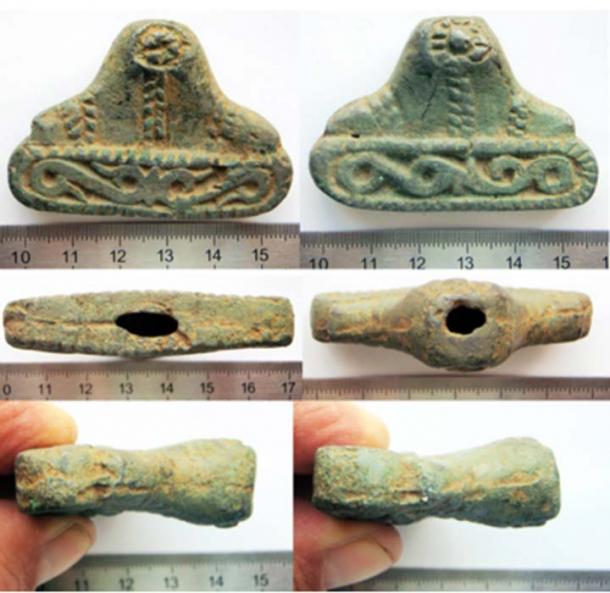
The Viking sword hilts found in Estonia. (Estonia Dept for the Protection of Antiquities / ERR)
Estonia, located strategically along trade routes connecting Russia to Persia, served as a crucial staging post for Viking expeditions. Initially drawn to the region for raiding purposes, the Vikings eventually established trade relationships with the local population and even set up permanent trading posts. The two caches of sword fragments discovered in Estonia add a new layer of understanding to the complex interactions between Vikings and the indigenous people of the region.
Significance of the Find:


The discovery of the Viking sword cache represents the largest of its kind in Estonia. However, beyond its sheer size, the grips of these swords offer archaeologists a unique opportunity to definitively identify and classify the H-shaped weapons used during that historical period. This finding not only enriches our knowledge of Viking weaponry but also contributes to a more nuanced understanding of life in Estonia during the Viking Age.
Future Exploration and Insights:
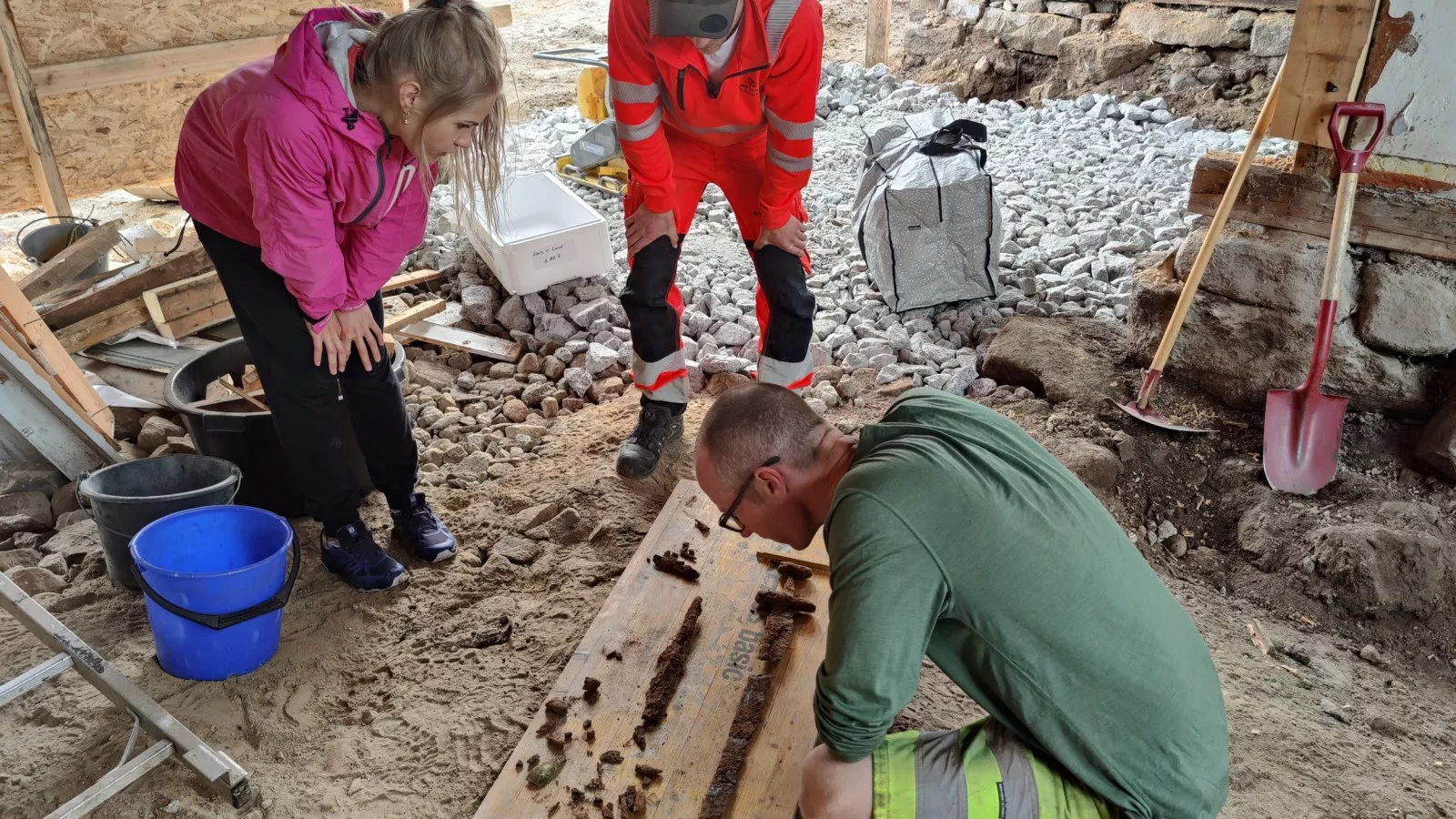
The unearthing of these sword fragments in Estonia has the potential to catalyze further archaeological investigations in the area. As researchers delve deeper into the historical landscape, more artifacts may come to light, providing additional clues about the Vikings and the intricate web of trade, warfare, and diplomacy that characterized their existence.

The discovery of Viking sword fragments in Estonia serves as a captivating window into the past, offering insights into burial practices, weaponry, and the dynamic relationships forged by Vikings during their expeditions. As archaeologists continue to explore and excavate, Estonia’s rich historical tapestry promises to reveal even more about this fascinating chapter in Viking history, further connecting us to the enigmatic world of these seafaring warriors.